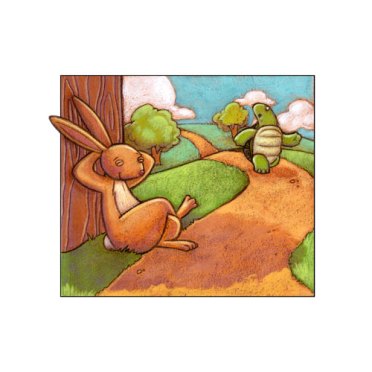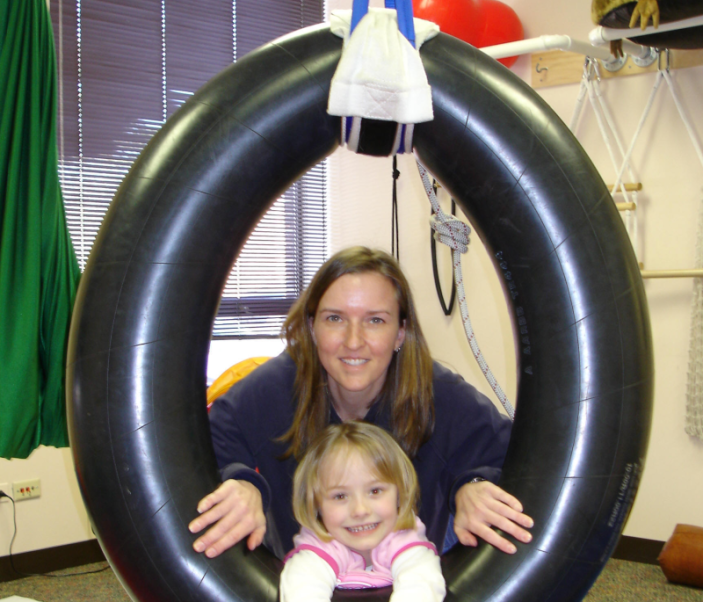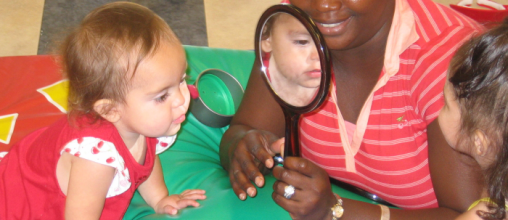 Confusion reigns in many ‘modern’ religions as ancient scriptures and rituals try to find relevance and meaning in a post industrial world. If ancient texts do have meaning for today’s world, then that meaning’s discovered through interpretation. Interpretation is the art of finding the original meaning in a text and then showing how that might be relevant today. Interpretation is particularly important for religions that hold ancient ‘texts’ to be important. In Christianity (my religion) the interpretation of ‘the scripture’ focuses on the Bible. Understanding the Bible therefore is a major area of concentration in the lives of all Christians. One would hope that better interpretation would lead to better Christians, but that does depend on what we get from our interpretive effort, and on how we then apply what we got to our lives!
Confusion reigns in many ‘modern’ religions as ancient scriptures and rituals try to find relevance and meaning in a post industrial world. If ancient texts do have meaning for today’s world, then that meaning’s discovered through interpretation. Interpretation is the art of finding the original meaning in a text and then showing how that might be relevant today. Interpretation is particularly important for religions that hold ancient ‘texts’ to be important. In Christianity (my religion) the interpretation of ‘the scripture’ focuses on the Bible. Understanding the Bible therefore is a major area of concentration in the lives of all Christians. One would hope that better interpretation would lead to better Christians, but that does depend on what we get from our interpretive effort, and on how we then apply what we got to our lives!
Unfortunately, as a religion Christianity is very far away from finding any consensus on how the Bible is to be understood.
 By studying the gospel accounts in parallel, we can see that many witnesses had come forward to tell what they knew. The result is that 4 different authors draw breathtakingly similar pictures, yet one can clearly see that the roots of their stories have been gathered independently. One impressive explanation for the striking similarities and critical differences comes from B. Gerhardsson who shows that there was a definite “Rabbinic method” that teachers of that day followed to accurately orally preserve their words, and it explains so well what we find in actual fact in the gospels themselves. Incidentally, in cultures such as India it is well known that teachers (gurus) orally train their disciples, and it is precisely this sort of tradition to which we owe the preservation of the sayings of the Buddha (for e.g.).
By studying the gospel accounts in parallel, we can see that many witnesses had come forward to tell what they knew. The result is that 4 different authors draw breathtakingly similar pictures, yet one can clearly see that the roots of their stories have been gathered independently. One impressive explanation for the striking similarities and critical differences comes from B. Gerhardsson who shows that there was a definite “Rabbinic method” that teachers of that day followed to accurately orally preserve their words, and it explains so well what we find in actual fact in the gospels themselves. Incidentally, in cultures such as India it is well known that teachers (gurus) orally train their disciples, and it is precisely this sort of tradition to which we owe the preservation of the sayings of the Buddha (for e.g.).1. Love God.
2. Love your neighbor as yourself.He tells us that in these two principles reside everything that God wanted us to know from the entire OT.
Now, what’s happened in effect is that Jesus, in the life he lives, reveals to us anew who God the Father is. Everything that happens subsequently, with the founding of Christianity, is the working out of this renewing knowledge of God and the resulting renewed relationship with God the Father in and through His Son Jesus. The authenticity of the message of the gospel and of Jesus Himself comes with a terrifying bang at the end of all four gospel accounts, first with His horrifying death, and then with His most unexpected resurrection.
We can clearly see some of what God has done (in the Bible), and it presents us with a puzzling conundrum. Why has God done these things? The answer that the Bible gives, that Jesus emphasizes, is LOVE!
Unfortunately for us we are far too fascinated with the ‘why’ and ‘how’ types of questions to not enter into speculation. Speculation is the mother of doctrine – and we will see where that takes us soon enough! Suffice it to say that the gospel is so simple that no one can mistake it – at the same time we can also choose to build huge edifices upon it and eventually we will forget the simplicity of the foundation and remember only the complication of what we have constructed!
As we dig into the gospels for more on Jesus, it is hard to miss the concept of Emmanuel (God with us), by which Jesus is introduced to us (Isaiah 7-8, Matthew 1:22-23). God is with us, and Jesus focuses God’s presence in his teachings on what the reality of God’s kingdom is all about, especially that the Father is particularly with the downtrodden, the suffering, the sick, the disenfranchised, the poor, the outcaste, the seeker, and all those others that religion and society have left in a lurch.
And that’s pretty much my own basic understanding now of how I find relevance in the Bible, for it’s the Bible that leads me to Jesus, and that makes me want to follow Jesus, and to know Jesus. I see Jesus most clearly in his life, his doings, and his teachings as they are found in the gospels and in turn, the gospels help me to see what the whole of the Bible is about, revealing both God the Son and God the Father to me.
In the rest of the NT we do not find much of Jesus being quoted, though allusions to His teachings and doings are numerous. This has long puzzled scholars, and bizarre theories have been generated by them in turn. But I suspect that once folks had memorised all the available stuff and were holding these findings in common with others who had also memorised the same stuff (about what Jesus said and did), they rarely needed to keep quoting the known bedrock to each other. Rather, one gets on with understanding and discussing how this works out practically, and you remind one another of where you are more by allusion than by quotation. In fact that’s what the word ‘gospel’ comes to mean in the rest of the NT, and that’s probably why outside of ‘the gospels’ themselves (that constitute that entire bedrock of critically important knowledge – “the gospel”) we see so little of the quoting that we would otherwise expect. The ground on which discussions take place IS common.
The gospels would then constitute something like the basic ‘catechism’ (boot camp), and the new believer’s first job is to memorize (remember that books were uncommon and extremely expensive back then) the gospel.
Everything that we have in our gospels is therefore The Gospel that was then taught, preached and memorized as the story of Jesus spread out. I do think this grounding process took time and there is evidence in the NT that the time was taken to establish these basics properly.
 Unfortunately, our modern and post-modern church gives scant respect to the gospels and I think this is perhaps why Christians of today scarcely remind us of Jesus the Christ whom they are supposedly following and believing! Instead of a people who behave in a manner consistent with intimately knowing Jesus their Lord and Savior, we all too often see packs of doctrinalists and literalists, who in their loveless rantings more resemble the religious enemies of Jesus than Jesus Himself!
Unfortunately, our modern and post-modern church gives scant respect to the gospels and I think this is perhaps why Christians of today scarcely remind us of Jesus the Christ whom they are supposedly following and believing! Instead of a people who behave in a manner consistent with intimately knowing Jesus their Lord and Savior, we all too often see packs of doctrinalists and literalists, who in their loveless rantings more resemble the religious enemies of Jesus than Jesus Himself!
What happens next in the NT is that this gospel goes out and meets various groups of people scattered across the Roman empire, eventually creating scattered fellowships of Christ believers/followers. Jesus has been acknowledged by these believers to be the long promised messiah of the OT and is therefore God’s anointed one, and in Greek, that is what the word Christ signifies, hence our word Christ-ian.
In the process of spreading out from Palestine into the larger Roman empire, practitioners of the gospel encounter cultural realities/environments that are not similar to those of Palestine at that time. In these strange new cultural environments, how is the gospel to be worked out? And so we have Paul, John, Peter, James and so on all communicating by way of brief letters (epistles) to address particular situations that arise after the proclamation of Jesus, and as their gospel walks out into unfamiliar cultural territory.
As I leap out over this chasm, I also notice that in many instances when the gospel spread into the Roman empire, there was culture shock and then cultural accommodation, and we can see this accommodation taking place in the epistles of the NT itself. Some of these cultural accommodations are sensible and sound applications of Jesus teaching and principles, while others fly in the face of the principles that Jesus taught, i.e. are contrary to the gospel of Jesus.
One excellent change for example, was that racial discrimination was tackled as it became obvious that not only people of Jewish descent were responding to Jesus and believing in Him.
Since Wilberforce and his friends fought their epic battle in the 19th century, the battle against slavery – of the official, culturally acceptable kind – has been mostly won. In consequence, colonial influence has waned and we do have a slightly more equitable world to live in.
Other areas of conflict that were left unresolved by the NT included that ubiquitous thing called war, which is an outgrowth of our tolerance for violence in so many forms, and prominently gender equality, and sexual orientations. As with slavery, the young church was unable to step back and ask whether Jesus’ gospel called for changes in these areas. We can see that Paul in particular was aware of the clash as his statement in his epistle to the Galatians (3:28) and again in Colossians (3:11) actually follows the implications of Jesus teaching to their conclusions. But he himself was unable to do much other than to toe the cultural norms in his other writings.I am privileged to live in India, which due to its decidedly Eastern culture and agrarian economy has a lot of cultural similarities with life in Palestine 2000 years ago. Still, the changes that have taken place in the world are huge^^. In India, the gospel as understood by India’s mainline churches has its own peculiar cultural blind spots. At its root, we find that we have inherited a literalistic approach to the Bible and subsequently many of the wrong cultural tendencies of peoples from biblical times are used to justify very wrong and un-Christ-ian practices in our present day church life. The most obvious of these is the failure to tackle the evil of casteism. We have also not tackled our male dominant society, and we have chosen not to take on issues of wealth, poverty and the ownership of property! We have also chosen to avoid questioning the church’s status quo on matters of sexuality and in particular the homophobia (LGBTA-phobia) that we have inherited from the Victorian colonial West.
In general, in the world of the 21st century we actually have a strange situation where many gospel implications (based on the gospel principles of justice and equality) have been wholeheartedly accepted by post-enlightenment, secular, science oriented, common sense based thinkers.
At the same time we have an even stranger phenomenon of the bulk of Christianity wrongly preferring the norms and mores of the 2000 year old culture that Jesus Himself challenged with His gospel!
The very fact that modern and post-modern thinkers have decided to support equality and justice seems to have enraged our religious conservatives, and the key question of whither the gospel will lead has been blanked out by blind reactionism. Where we see this most clearly is regarding sexuality and sexual orientation. While abuses in the ‘institution’ of heterosexual marriage are rampant, most especially in the propagation of male dominance, domestic violence, and in heterosexual exceptionality, we find many Christians concentrating their rage instead against persons with differing sexual orientations (the LGBTA) and particularly focused on ‘gay bashing’, homophobia. I am frequently told by would-be conservative ‘scholars’ that this is because of their ‘interpretations’ of the Bible, and it involves a savagely literalistic use of some texts*.
The (conservative/non-affirming) church has actually created a class of untouchables and has been the agent of evil in denigrating these persons’ humanity. Rather than reaching out to the downtrodden, we (the church that claims to follow Jesus) have become the authoritarians who tread upon the lives of others – what a travesty!
The shrillness accompanying any discussion of sexual orientation other than heterosexuality is amazing to me. Forgotten are Jesus’ directions to take responsibility first for our own sins and to be nonjudgemental of others, let alone being so willing to cast the first verbal stones. Perhaps the most startling thing for me was the discovery that conservative heterosexuals freely admit that they are not aware of when they chose to (‘obeying God?’) become heterosexual, yet homosexuals (really, any LGBTA) are accused of choosing to be homosexual, therefore denying God, and therefore worthy of hellfire etc.!














 show improvement and sometimes the improvements will be remarkable.
show improvement and sometimes the improvements will be remarkable. In our experience even severely affected children can show remarkable improvement, so don’t get discouraged and don’t give up hope.
In our experience even severely affected children can show remarkable improvement, so don’t get discouraged and don’t give up hope. d language skills but will still be lacking relationally.
d language skills but will still be lacking relationally.





















Recent Comments